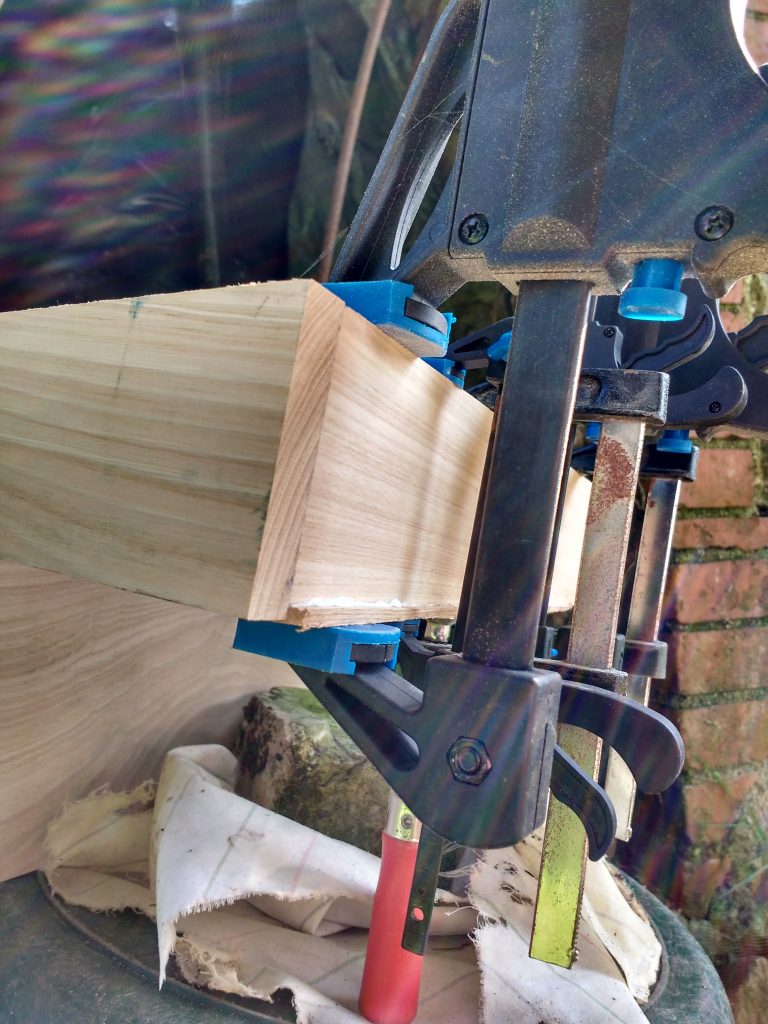We needed some steps for the kitchen since our cupboards are really high. However, we’re a bit short on floor space, so I wanted something that could fold away and not take up too much room when we weren’t using it. Not finding anything like that on the internet, I made my own plan in SketchUp and set about building it.
Here’s the first cuts of the sweet Chestnut ready for cutting into the parts which make up the stool.
After having run the pieces through the planer and thicknesser, I glued some of the more complicated pieces. Here, you can see the pair of sloped edges. Clamping them as a pair meant I could set the clamps against parallel edges. 
This is the glue-up of the two pieces which make up the sides of the part which swings down. Their shape is a bit complicated because they have to fold into the upper steps. Again, gluing them as a pair meant I got nice parallel surfaces for the clamps. 
I used my router to create the rebates in the sides (here are the two base edges held in place together to minimise the likelihood of tear-out).
Having milled all the pieces, I did a quick dry-run to see whether things fitted as I expected. In general, everything looked good.
Here’s the dry-fit with the steps in the “stool” configuration. The footprint of the steps when they’re folded like this is only 41cm wide by 27cm deep. They height of the final stool is also just right for resting on whilst waiting for something to cook. 
Checking things fit together as expected once glued together. 
As it turns out, not everything was quite right, so I had to shim this step to make up the difference.
I felt the steps weren’t going to resist racking too well, so I added this diagonal brace to provide better rigidity.
Adding the hinges. I looked for sprung hinges that would have made the top come down gracefully, but they were all too big for this project.
Hinges in and the first of three coats of varnish going on. I lightly sanded between coats with 1500 grit to remove small blemishes.
Steps stored in their stool configuration, taking up a relatively small area.


